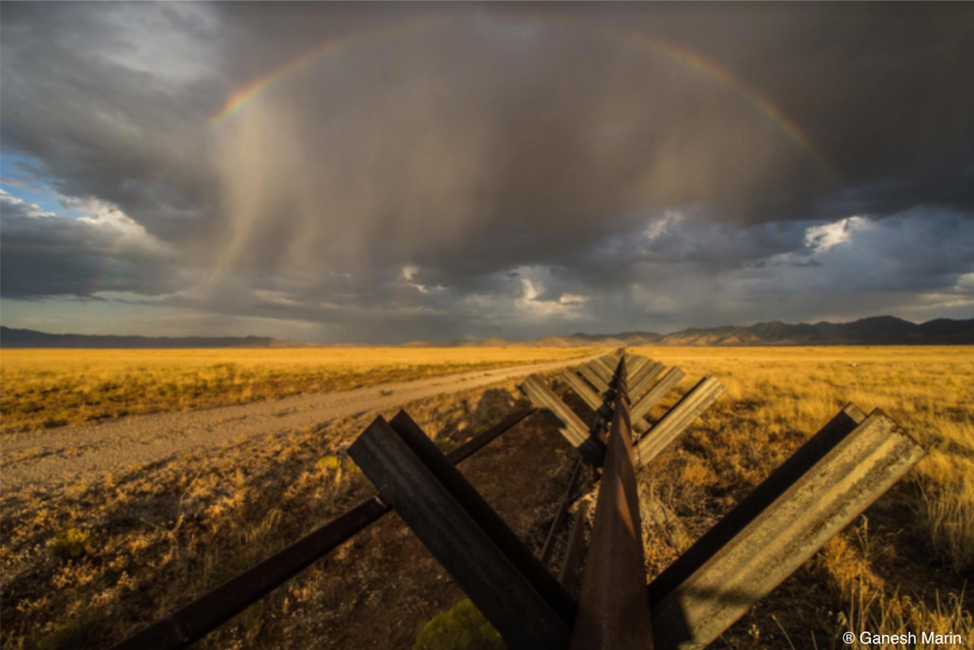Ganesh Marin, KCRL Ph.D. Student, awarded National Geographic 2020 Early Career Grant!
Ganesh_Picture1.png

Ganesh Marin, a first-year Ph.D. student in SNRE, was recently awarded a National Geographic Early Career Grant to research the effects of the border wall on wildlife. Ganesh is a mammalogist from Mexico researching borderlands ecosystems, habitat connectivity and land management for wildlife conservation.
Article contributed by Ganesh Marin:
For mammals, the Northeastern corner of Sonora, Mexico is considered a corridor for jaguars, ocelots and black bears that use riparian forest and mountain ranges to move through the Sky Islands Region. In this region, Cuenca Los Ojos ranch covers 52,000 ha dedicated for conservation since 1990 with the principal aim of preserving Cajon Bonito creek, which is the principal water source for the region and one of the last conserved rivers in northwest Mexico. Cajon Bonito creek is home to a number of vulnerable species, such as the Chiricahua leopard frog and 8 endangered species of fishes that depend on the permanence of this water flow. Furthermore, in 2019, our team documented the presence of four species in Cajon Bonito listed as endangered in Mexico: the American beaver, black bear, ocelot, and jaguar.
Despite the ecological uniqueness of Cuenca Los Ojos and Cajon Bonito creek, human activities have a strong impact on the region. As in many other protected areas in the USA-Mexico borderlands, a vehicle barrier has divided the region since 2008. However, current expansion of the border wall and additional fences are making the barrier even less permeable for wildlife movements across both countries. In Mexico, the Federal highway No. 2, was recently expanded to four lanes, posing a risk for wildlife. Vehicle traffic and noise modify the landscape of fear, affecting wildlife diversity and habitat use, and presenting additional barriers. Other associated threats with roads are wildlife collisions, which have negative consequences for mammal populations and represent a risk for drivers. It is estimated that in the United States alone there are over 58,000 people injured per year due to wildlife collisions (Conover 2019). For large species with low reproductive rates, such as the carnivores, car collisions are especially detrimental and can reduce local populations (Gilhooly et al. 2019). Recently, a female black bear killed by a car on a major Sonoran highway led to a plea by the state congress to incorporate mitigation actions to reduce roadkills (Bravo 2019).
Under this context, I am starting a Ph.D. project with Dr. John Koprowski to assess how the diversity and habitat use of mammals change along this modified but biodiverse landscape. The patterns we will obtain will allow us to model the habitat connectivity of mammals, focused on felids and black bears, to identify priority sites for mitigating the consequences of the highway and the border wall.
Just as the nature of the project is binational, so too is our team, and we are collaborating closely with the board members of Cuenca Los Ojos foundation, including Valer Clark, Jose Manuel Pérez and Jeremiah Leibowitz. The initial stages of this project started a few years ago with a team of amazing scientists and naturalists led by Jan Schipper and Chelsey Tellez of the Phoenix Zoo conservation department, an early career biologist similar to myself, Kinley Ragan (ASU), and a grassland ecologist and conservationist from Santa Lucia Conservancy, Rodrigo Sierra.
Right now I am really excited because I received the National Geographic 2020 Early Career Grant, allowing me to continue this team work and include new members with new ideas. Part of the project will be dedicated to monitoring bat populations and collaborating with the Mexican bat researcher and National Geographic explorer-at-large, Rodrigo Medellin, as well as Daniela Cafaggi, who will be helping with bats and science communication. I am also working with Dr. Melissa Merrick (SNRE) and Dr. John Koprowski, and we are working to start a project monitoring black bear movement and connectivity in borderlands ecosystems, adding more fun and data to the project.
In the end, more than a Ph.D. project, this is a collection of stories and goals merged together in collaborative efforts. All of them oriented to conserve endangered species and maintain the wild nature and beauty of the borderlands.
Instagram: @ag.marin
Mountain carnivores web site: https://arcg.is/mWiWO
Email: ganeshmarin@email.arizona.edu
Slideshow photo and photos above taken and provided by Ganesh Marin.

